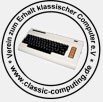I use the remaining D flip flop from the '74 responsible of halving the clock plus an additional '74 to use those inputs. It was a bit annoying to have that thing making loud tones without control.
It's all under control now.
I have heard some reduction on volume randomly... noise? I imagine that the amount of wiring to make it work is introducing it.
Did you use the DAC08 ? They are a bit hard to master. Pullups or pulldowns are needed to make the H/L transition fast and reliable. The 74LS273 should be good for the input stage but there may be a situation where for a very short amount of time the 74LS273 is latched while the data-bus is not ready. As the DAC08 has a <100ns (>10mhz) setting time, even short digital blips can result in a recognizable reduction in output-voltage.
As i said earlier: I like the TLC7226 Quad-DAC with MCU-Interface because it is easy to use and has a small decoder integrated ![]() it has a "slow" 5us setting time (200khz) which is more than good enough for audio. This may filter some of the potential blips in a computer system.
it has a "slow" 5us setting time (200khz) which is more than good enough for audio. This may filter some of the potential blips in a computer system.
-Jonas

